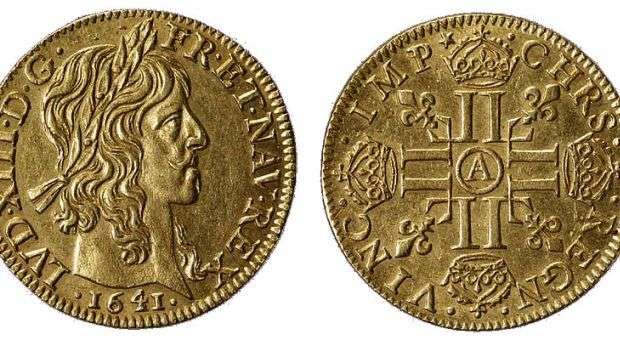Saying that monetary duality will celebrate its centenary in 2014 might seem like a bad joke or madness. But in reviewing the history of Cuba, it can be checked that its origins is much before the Special Period.
On December 28, 1898 , the then President of the United States, William McKinley, decreed by means of an executive order the use of dollar as legal currency in Cuba, also setting exchange rates against the Spanish and French currencies circulating in the Island.
Three days later, on January 1st, 1899, the American money went into Cuba almost by force, along with U.S. soldiers of the first military intervention in the island. A new government landed with its new money.
Through this decree , McKinley ordered a new financial regulation in Cuba, devaluating currencies historically circulating in the former Spanish colony and facilitating the use of U.S. dollar, according to the interpretation of the Presidential Decree 123 of 1989 made by the Cuban historian Concepción Planos Viñals.
Cuban peso does not yet exist and the salaries were paid in French and Spanish currency. U.S. currency entered and resulted in a quite uncomfortable financial menage à trois which even provoked strikes (in 1907, Havana tobacco workers went on strike and refused to return to their posts unless their salaries to be paid in dollars).
Cuba did not have its own national currency until late 1914, when President Mario García Menocal left to posterity a legacy that continues into the pocket of every man and woman living on the island: the Cuban peso and a dual monetary system.
The Official Gazette of November 7 of that year announced the creation of the Cuban peso and the continuity of dollar use as unlimited legal currency, and with the same value of the new currency.
For historian Alejandro García Álvarez “the conversion of monetary relations in a homogeneous whole and its unification under a national monetary standard had been an aspiration of several Cuban social sectors, especially from the inclusion of another unit, U.S. dollar, in 1899.”
However, García Álvarez believes that the monetary system created by Menocal functioned as a mere auxiliary of the American one. ” The creation decree endowed both currencies of unlimited circulation in the country and the possibility of interchangeability.”
The creation of Cuban peso included “the bimonetary pattern assimilation that dominated Cuba until 1959. ” In practice, the decree signed by President McKinley on December 28, 1898 remained in force for more than half a century.
But McKinley only introduced dollar by force. The origin of dual currency is in 1914 , when Cuban peso emerges twinned with dollar. The law that gave birth to Cuban currency established it with the “same weight and fineness” of the dollar at the time, as Cuban researcher Luis René Fernández Tabio, of the Centre of Studies on USA, wrote in an article on dollarization in Cuba.
Oscar Zanetti Lecuona, historian specializing in economic issues, reaffirms that argument in a more colloquial way. “Cuban peso starts tied to dollar since its inception and that parity was always tried to be maintained.” He adds that one of the factors attributed to banking crash of 1920 in Cuba was the absence of an effective own currency to devalue .
With or without pesos, Cubans preferred the dollar at the first half of the twentieth century, although, in practice, there was no real difference between the two currencies.
Historian Gregorio Collazo Perez notes that in 1920s “the new Cuban currency, which had equal gold content than the U.S. gold dollar, was progressively displaced by U.S. paper currency, which, in 1924, was part of 86.8% of the nation’s money stock, while Cuban gold, silver and nickel coins were only the 13% remaining.”
There were no Cuban peso bills until after the decree 33 of March 1934. But only after 1939, the exchange to domestic currency of sugar and its derivatives sales, as well as 30% of the exported products were forced by law.
After the political turmoil of 1930s, the parity of the two currencies was fixed: one by one, as in 1914. The dual circulation continued in later years. Still in 1942 part of the taxes collection was made in dollars and even government salaries were paid in that currency.
The dollar continued to circulate in hand with Cuban peso until the National Bank of Cuba divorced them. Law No. 13 of 1948 established the Central Bank of the island and killed duality. “Given the strength achieved by Cuban peso, this law also determined the cease of dollar strength for internal transactions”, as published in the Journal of Cuba’s Central Bank in an article on the history of exchange rate regimes of Cuban peso .
The Revolution triumph s in 1959 and the tenure of U.S. dollar is penalized by Resolution 140 of 1961. But parity persists in the official rate, although this varied between 0.82 and 1.15 Cuban pesos (CUP) per dollar, until in the 1990s, it was established a fixed amount, the current one: one by one again.
Ernesto “Che” Guevara, while being President of Cuba’s Central Bank said he would defend “the value of our currency because any devaluation affects mainly on the popular classes, which would be contrary to our revolutionary standards.”
Oscar Zanetti defines it otherwise. “That of Cuban peso to be at parity with the dollar was in the mentality of the time, the mentality the Revolution and its leaders inherited and have, a core value of economic performance of the Republic. The peso-dollar parity remained until yesterday on fictitious basis. The problem of dual currency in Cuba is the existence of an unrealistic exchange rate in the business sector of the economy. ”
Cuban economist Juan Triana Cordoví, in a somewhat informal tone, commented that “we always talk about dual currency system, on the overvaluation of Cuba’s official exchange rate, but the overvaluation of CUP official rate comes from 1958 that was when Cuba had to have devalued its currency and the Central Bank did not want , for a problem of deficit in its trade balance.”
On 13 August 1993 the dollar is decriminalized. Two years later the first CADECA (exchange houses) opened. The official exchange rate is exclusively for businesses. The Cadeca opened premiering the first ex change rate connected with the real state of the economy, one dollar cost 35 CUP.
Although the dollar is no longer circulating in Cuban economy, it has a substitute that does not resemble, but supplants it: the convertible peso (CUC) , which is also changed one by one.
One of the most consulted authorities on the subject of Cuban monetary policy, Pavel Vidal Alejandro, former specialist of Cuba’s Central Bank, prescribed a radical solution to eliminate dual currency : devaluating the official exchange rate of the Cuban peso (one by one), unify it to the exchange rate of CADECA (25 CUP by 1 CUC) and give convertibility to CUP.
Vidal Alejandro argues that dual currency e limination could have been done in 2003, along with dedollarization, if it were possible to change all dollars to the price of CADECA, if it had been the only price in force.
The real problem of dual currency is the existence of two exchange rates or, rather, the existence of a disproportionately revalued exchange rate, which does not reflect the real state of the economy, but it is a backwardness of a mistake of almost a century ago.










